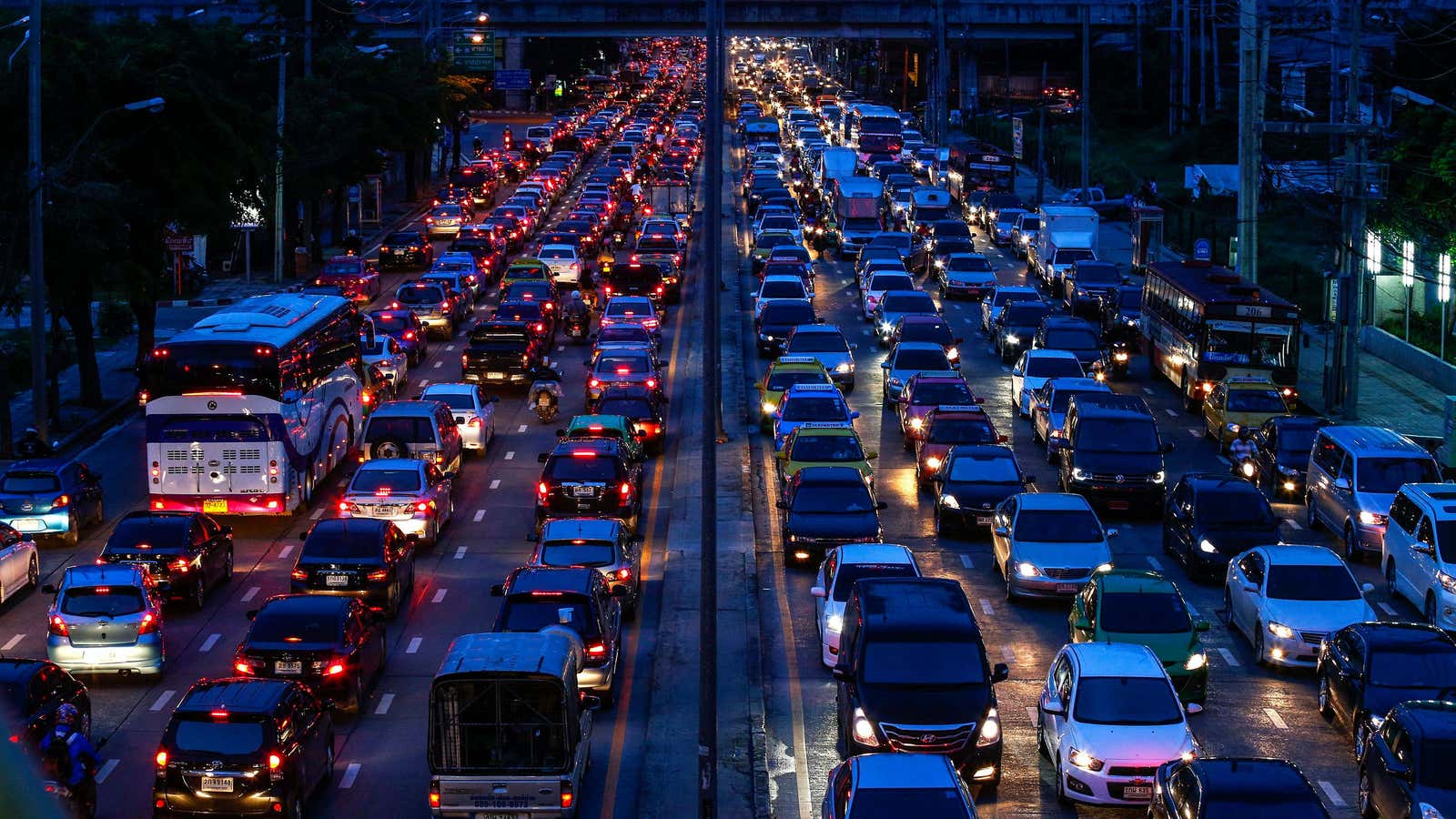Every month, 130 million people around the world use the Google-owned navigation app Waze to get somewhere faster in their cars. But with congestion rising, commutes have only gotten longer. In the US, drivers spend an average of nine full days in the car each year according to US census data.
It’s been a year since Waze rolled out its carpool feature nationwide in the US, matching drivers on scheduled commutes with paying passengers. “Waze needed to adapt to a world in which roads were quickly filling up,” Josh Fried, head of Waze Carpool, tells Quartz. “The routing we’re doing is not having as much of an effect because there are too many cars on the road.”
Waze facilitated 550,000 rides in September, and it says it’s on track to hit 1 million by early next year. Waze says it has avoided putting the equivalent of 22,000 tons of carbon dioxide into the atmosphere over the last year globally.
Yet carpooling has proved a tough sell for Americans. Only 7% of Americans carpool (pdf), down from a peak of about 20% during the 1970s oil crisis. “It’s taken more convincing in the US to get people to try and carpool,” notes Fried, comparing it to the rapid growth carpooling has seen in countries like Mexico and Brazil where it’s more culturally accepted. Only three US metro areas where carpooling is already well-established—Seattle, the San Francisco Bay Area, and Washington DC—have seen quick adoption, says Fried.
To lure new riders and drivers, Waze is giving away tacos, canvassing co-working spaces, and partnering with transit agencies. For now, Waze doesn’t take a cut of any fees it collects from riders (about 58 cents per mile), and is entirely advertising (and Google) supported. But it may collect a service fee in the future if it can scale the service, Fried told Quartz.
A big business could be waiting for Waze and competitors like Scoop. While Lyft and Uber are battling it out for on-demand service, they have left casual commuting largely untouched. Lyft dropped its carpool pilot program in 2016, while calling it the “right long-term strategy.”
Waze has the advantage of having already solved one of the hardest carpooling problems: matching enough drivers and passengers within a single market. Its mapping platform has millions of customers already commuting to work. As more people sign up, Waze can offer more rides in real-time, and integrate them with micro-mobility options from scooters to bikes in the future. Today, Waze carpool drivers go an average of three to four minutes out of their way to pick up riders. With more users, those numbers should drop, while saving drivers and riders time by accessing special high-occupancy lanes. And unlike Uber and Lyft, Waze doesn’t have any about drivers as contractors or employees.
Until autonomous vehicles arrive, and it may be a while (membership), the newest thing in ride-hailing could be carpooling.
